Banksy's Snorting Copper back on the beat after restoration
- Published
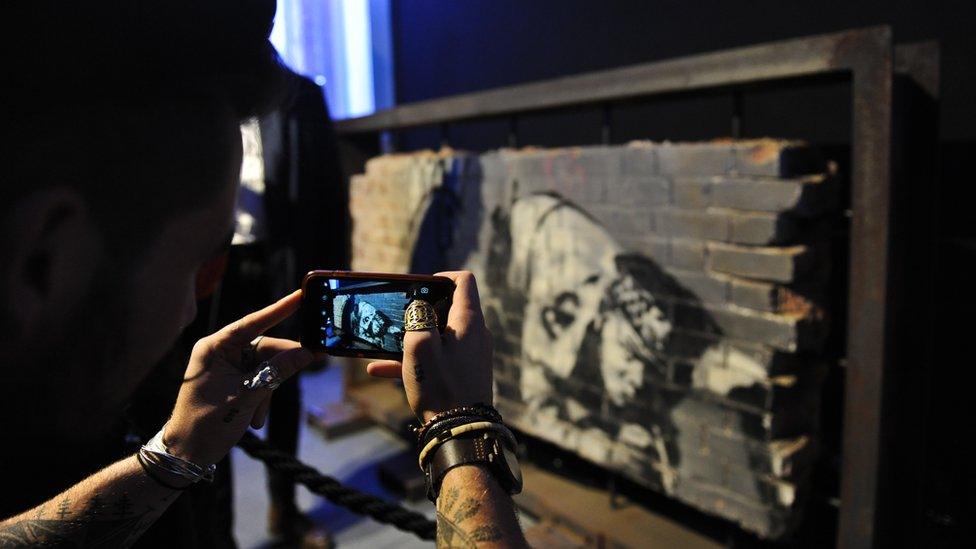
The unveiling in Shoreditch generated great interest
Jet washed, painted over and attacked by thieves, Banksy's Snorting Copper artwork in London's Shoreditch had been thought lost forever. So just how has the £1m piece been brought back into public view - and is it still "a Banksy" at all after so much restoration work?
A uniformed policeman on his hands and knees.
But far from forensically fishing for clues at a crime scene, this particular officer of the law is engaging in an altogether different line of inquiry.
The mural, stencilled on an East End toilet block under the cover of darkness in 2005 and showing a policeman apparently sniffing cocaine, garnered instant intrigue and notoriety.
Having been hidden from view for a decade, it is now back on the beat in its original location after a painstaking restoration process.
Its story is worthy of the finest crime caper with the local authority, vandals and would-be thieves all prime candidates to feature in an identity parade.
Hackney Council, finding it a less than arresting attraction, partly cleaned it off before whitewashing the Curtain Road wall.
Undeterred, unscrupulous types keen to cash-in on the rapidly rising value of Banksy's works attempted to shave off the face of the bricks with an angle-grinder.
Each one had been numbered - presumably to ease the process of putting the structure back together.

The artwork, on this section of wall, was hidden a decade ago by a coat of white paint
The wall was eventually hidden behind plywood.
Snorting Copper, as with so much in the 'here today, gone tomorrow' world of street art, was, well, gone - until two businessmen tipped off about its existence came to its rescue.
"We knew - or we thought we knew - the Banksy was there," says property developer Jonathan Ellis, who along with David Kyte purchased the site and turned it into a mix of residential and commercial units.
"Hackney Council put a public convenience there. That's where the Banksy was painted - on the side of a little toilet block.
"We've spoken to Hackney to try to find out exactly what happened. We found it very difficult to find anyone within the council who would admit to painting it over.
"It was probably three or four metres high with weeds and rubbish and god knows what else when we got the keys.
"I think it would have been a crime if we'd just knocked it over with the rest of the bits and pieces on the site and put it on a skip."
After about a decade of being hidden from sight, investing time and money in a restoration attempt was "a leap of faith," according to Kyte.
"They thought they would be able to bring it back to life, but there was no guarantee they could or that what was underneath was of any interest or value," he told the BBC's Inside Out programme.
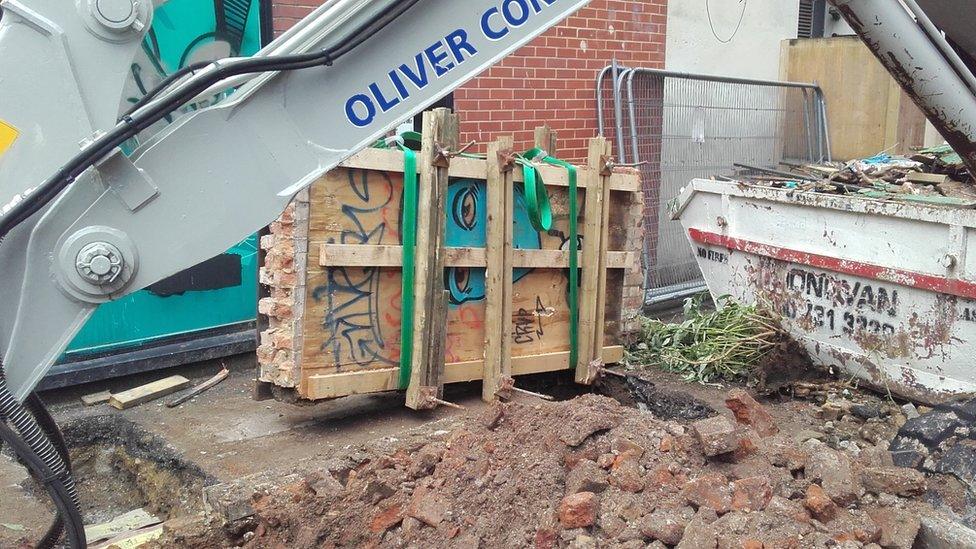
The section of wall was boarded up and lifted off the building site
Even removing the 2.5 metre-long (8ft) stretch from the site proved far from easy.
When it was lifted by crane on to a vehicle, its chassis was almost smashed by the two-tonne weight.
Abandoning their initial attempt, it would be a further week or so until alternative transport was arranged and it could be taken 300 miles (480km) north to Carlisle, in Cumbria.
"We got it back in one piece eventually," laughs Chris Bull, technical director at the Fine Art Restoration Company - a firm more familiar with Picasso and easel paintings.
"All sorts of things had happened to it. There had been several attempts to destroy or steal it."
A team of six experts worked tirelessly, initially compiling images of the undamaged piece and working out what lay where.
"We did a lot of background research, we had lots of photos," he recalls.
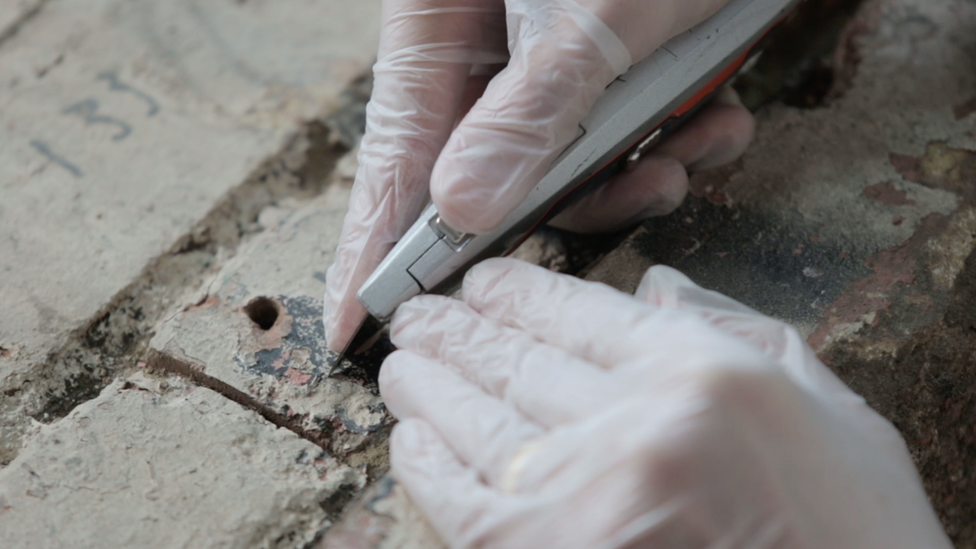
Restorers carefully stripped and scraped each brick to reveal the underlying artwork
"Lots of energy was put into finding out which brick had which piece of the artwork so when we were using the solvents to strip back the many layers of white paint we knew what colour we were looking for underneath.
"It's very time consuming, very delicate. Solvents cut through paint very quickly so you have to use a neutraliser to arrest it rapidly.
"There's always a risk we could've destroyed it. Conservationists are highly trained, but there is always a risk something can go wrong."
With the work complete and the section of wall now attached to a steel frame, the piece has been valued at £1.25m.
Determined, they say, not to sell it on for a quick buck, Ellis and Kyte put it on public display on Thursday on the site where it was first painted - although this time it is inside the revamped building and protected behind glass with the added security of CCTV cameras and alarms.
"To put this back is restoring a hidden gem," Ellis asserts.
"We had a couple of options. We thought, 'Let's put it back and allow the public to enjoy it'.
"If it's curated properly and the walls are painted well, it's fantastic for a city to have street art."

Who is Banksy?

Now probably the most well-known graffiti artist in the world, his subversive and satirical work - created with the use of stencils - began appearing in his home town of Bristol in the 1990s
Moving to London around the turn of the millennium, his public recognition increased markedly as his works (such as those featuring Gangsta Rat) came to the attention of national media
He has never revealed his identity, with the mystique seemingly only adding to the intrigue - and value - of his pieces
In an auction in 2008, a piece of work called Keep It Spotless was sold for $1.8m (£1.4m)
A second version of Snorting Copper was painted on London's Leake Street but was destroyed

But with so much stripping back and touching up having been carried out, can Snorting Copper still be considered a Banksy?
"That's a really interesting question," says restorer Bull. "What's been uncovered is essentially the Banksy that was there. The original ethos is still there.
"[Cutting through white paint to get to Banksy's] is very difficult. It's never going to be possible to say what is the council's white paint and what is Banksy's, but it looks exactly like it did when Banksy did it."
"When you stand back and look at it, it is the Banksy."
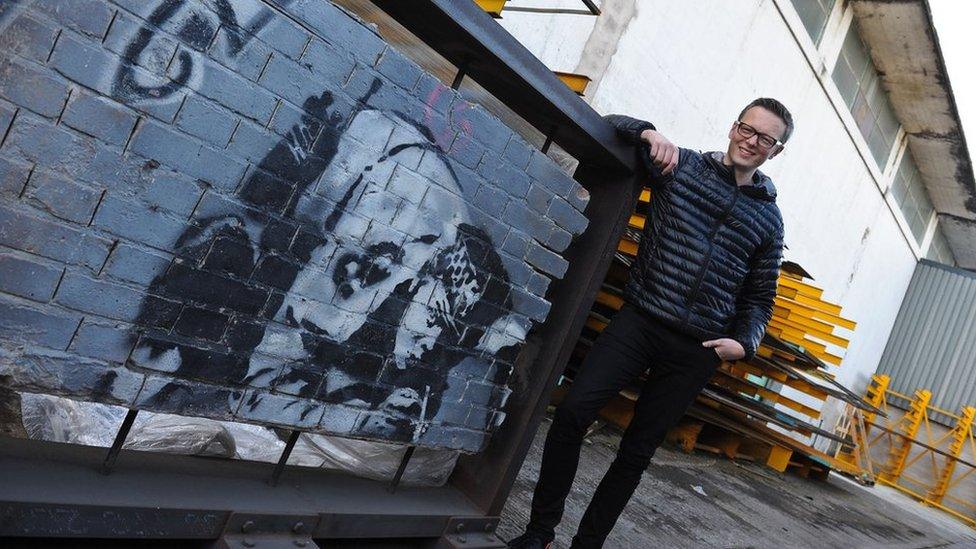
Chris Bull and his team worked for several months to restore the piece which had "seen better days"
Ed Bartlett, author of Lonely Planet's Street Art book, agrees.
"Is it still a Banksy if it's been restored? Yes, of course.
"It's not just about what you're seeing in terms of physical layers of paint, it's about the idea - and the idea will be as relevant in 100 or 1,000 years as it was when it was conceived and painted.
"It's about the intellectual idea and that's where Banksy differentiates himself. His way of doing things is above and beyond a lot of artists."
Even the local authority has come round to appreciating its cultural value.
"I think it is really important that we recognise Hackney's history around radical street art," says the area's mayor Philip Glanville.
"Sometimes the council has not been the best custodian. I think we've got really good policies in place now, we're really clear that we support street art and we support people having their representation out there on the street.
"We're not going to paint over it again."
See more on Inside Out on BBC One in the North West and North East & Cumbria on 9 October at 19:30.
- Published21 September 2017
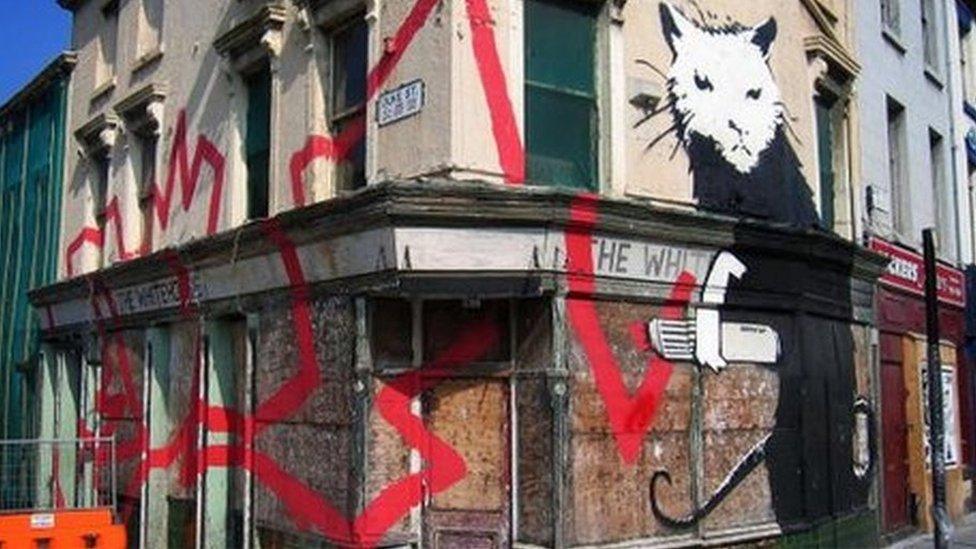
- Published13 August 2018
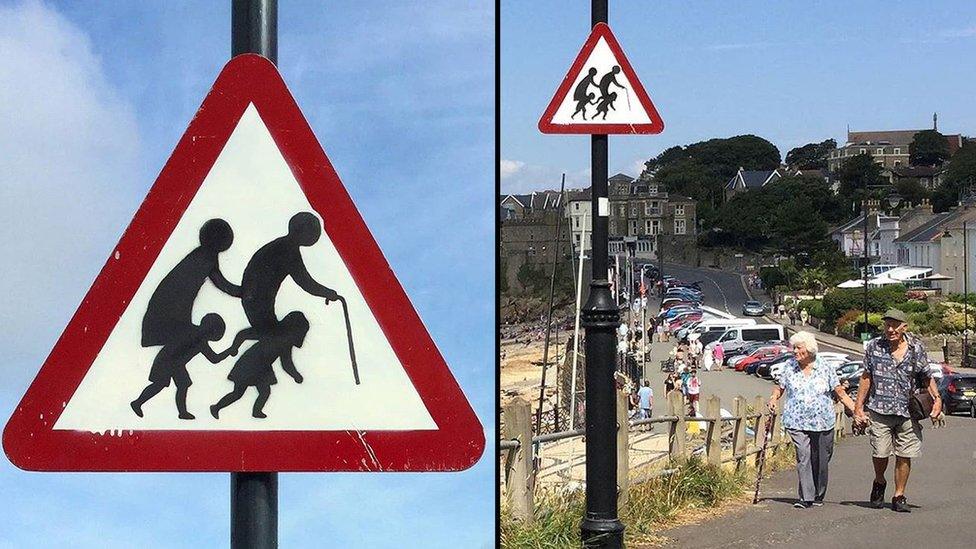
- Published18 September 2017
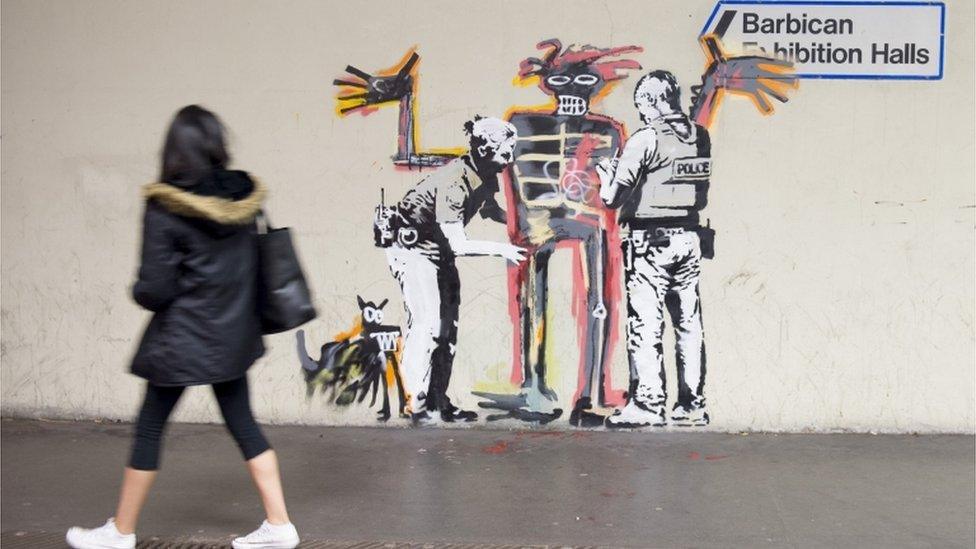
- Published2 March 2017
